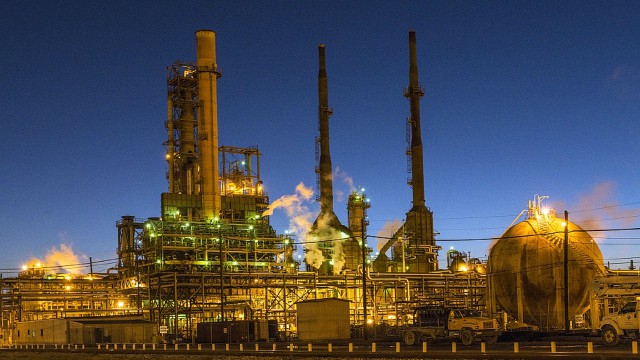Since the beginning of this year, Cenovus Energy Inc. (TSX:CVE)(NYSE:CVE) has lost more than 50% of its value and has continued its downward trajectory, despite oil prices somewhat stabilizing at lower levels.
The company has perhaps believed too fervently that an oil rebound is on the horizon. Cenovus agreed to pay $17.7 billion to acquire oil sands assets from ConocoPhillips in March, financing the deal with a significant equity issuance and more than $10 billion in debt; $3.6 billion of the debt is in the form of bridge financing. The company recently agreed to sell off $4.5 billion in non-core assets to cover the bridge loan; however, the equity dilution stemming from the deal as well as the significant debt overhang resulting from the transaction has led to investor dismay. The share price continues to cascade downward following this news.
Last week, rating agency DBRS announced that it was downgrading Cenovus for a number of reasons, but many of the underlying reasons for the downgrade stem from the $17.7 billion transaction. This debt downgrade comes at a poor time for Cenovus, as other outside factors, such as the resignation of Cenovus’s chief executive officer Brian Ferguson last week amid scrutiny following the deal, and indications that further asset sales would be on the way to help pay down some of the company’s massive debt load, have decreased the faith of the company’s investor base in the ability of Cenovus to turn around its fortunes.
With WTI crude trading below $45 per barrel and Western Canadian Select trading around $30 per barrel, investors banking on some sort of sustained oil rebound have, at least for the past year or so, had their hopes dashed. With oil prices diminished, problems with the ability of Cenovus to be profitable long term are compounded by the fact that the oil producer will now be attempting to sell conventional oil assets to an increasingly smaller buyer base in a market in which these assets stand to produce lower long-term profits should the current environment remain unchanged.
The proposed spin-off of an additional $5 billion of assets from the deal is also complicated by the recent departure of Mr. Ferguson, and analysts remain wary of the company’s ability to recoup the value it paid for the assets from buyers in today’s market given the current commodity price environment.
Bottom line
For investors considering a contrarian play on oil, I would suggest looking elsewhere, as Cenovus has a number of significant hurdles to jump over in the next few quarters before many investors begin to take this company at face value.
Stay Foolish, my friends.






